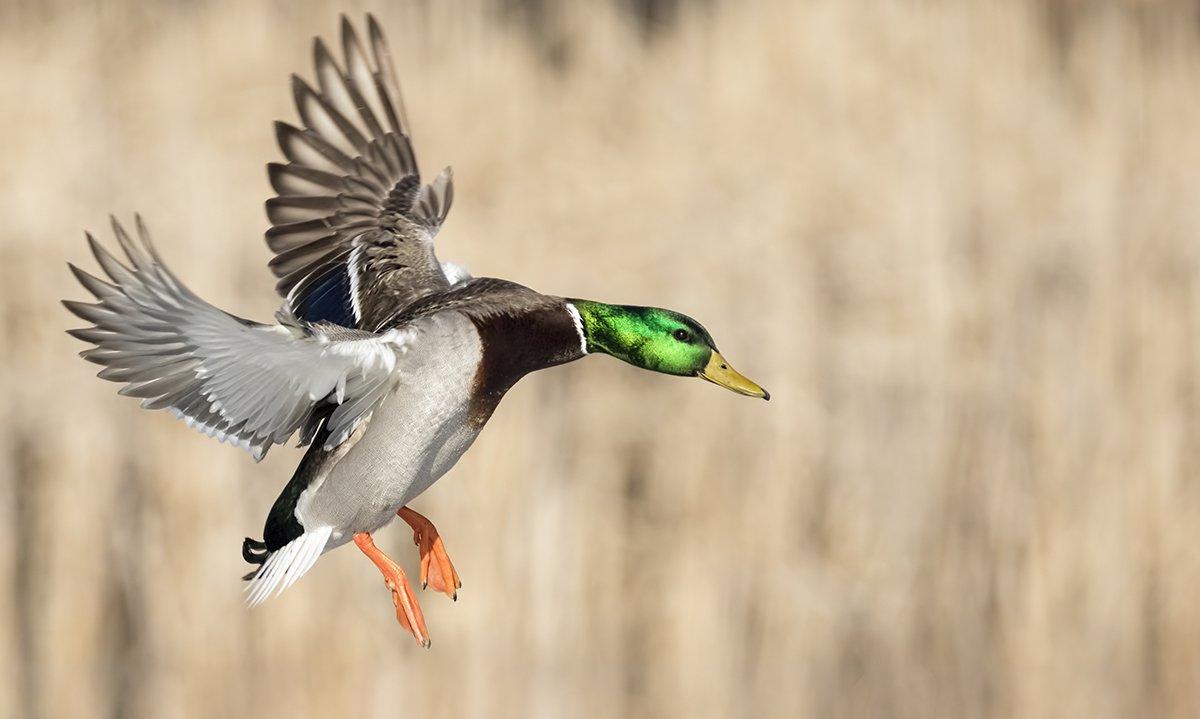Group Suggests Alternative to Harsh Cut Proposal
Delta Waterfowl is urging the U.S. Fish and Wildlife Service to reconsider a proposal to reduce the Atlantic Flyway mallard limit in 2019, and the idea has proven popular with the organization's members.
The USFWS and Atlantic Flyway Council plan to lower the Atlantic Flyway's daily mallard limit to two birds, both of which can be hens, for the 2019-'20 season. In a June 21 press release, Delta questioned that harsh reduction and said a daily limit of three mallards, with just one hen permitted, would be better for hunters and more beneficial to recovering mallard populations.
Reducing the limit to two mallards daily but still allowing two hens in the bag makes absolutely no sense to me, Dr. Frank Rohwer, president and chief scientist of Delta Waterfowl, said in the release. We think a three-mallard, one-hen limit is a vastly more logical solution.
The USFWS and Flyway Council plan to reduce the Eastern mallard harvest rate is a response to population surveys and other data that indicate breeding mallards in the northeastern United States have decreased about 20 percent since 1998, the release said. (Meanwhile, mallards in eastern Canada mallards are steady to increasing.) In recent seasons, with a four-mallard/two-hen daily limit, the hunter harvest rate has exceeded what USFWS population models indicate will allow a sustainable breeding population.
Delta Waterfowl said in the release that a daily limit of three mallards, with one hen, would better meet the required reduction in harvest rate, especially because of its emphasis on the hen population.
Clearly, our suggestion of one hen mallard per day would further decrease the hen harvest, which is truly what matters most, Rohwer said in the release. A three-and-one limit would also help correct the drake-skewed eastern mallard sex ratio — which is believed detrimental to duck production and appears to be getting worse — without unnecessarily punishing hunters with a very restrictive overall bag limit.
The idea has gained traction with Delta's membership. In May, the release said, the group surveyed its Atlantic Flyway members, and 63.9 percent of the 1,220 respondents favored a limit of three mallards, with one hen. Only 81 respondents, or about 6.6 percent, supported the two-mallard proposal. Another 11.6 percent supported four mallards and two hens for a 30-day season (with 60 days for other ducks). Surprisingly, 17.9 percent favored a two-mallard limit with one hen.
Using that survey data, Delta offered its three-mallard limit to the USFWS and Flyway Council, suggesting that harvest analysis be performed. Both declined.
The current USFWS administration has demonstrated that it's pro-hunting, notably by increasing hunter access on national wildlife refuges and requiring a hunting element in this year's federal duck stamp contest — both fantastic moves, Rohwer said in the release. The USFWS has the smartest migratory bird biologists in the country, and we believe they could've easily done a three-and-one limit analysis from the start or could evaluate it before a final decision is made. The reality is the analysis may say a three-and-one limit won't work. If that's the case, fine, but it has to be explored.
If nothing changes, in October, the two-mallard limit will become part of Atlantic Flyway regulatory frameworks for the 2019-'2020 season. In the release, Rohwer called on Delta Waterfowl members and Atlantic Flyway waterfowlers to contact state biologists and the USFWS.
It's time for you to ask your biologists and administrators the same questions we've been asking for months: Why is a two-mallard limit the only proposal on the table, he said in the release. Why not analyze a three-and-one mallard limit, and why isn't everything possible being done to best serve duck hunters while also ensuring the health of eastern mallard populations?
Click here for more Realtree waterfowl hunting content. And check us out on Facebook.








